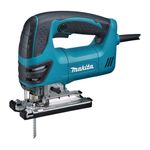Future of Commercial Building Trades?
Hey everyone!
First, it’s important to communicate that I’m not actively working in the trades nor have I had prior experience in the trades. So please keep in mind that this thought I have does come from a place of ignorance about the reality of the commercial building trades. My goal is get trade workers and business owners of trade based companies to think and consider possible implications of this outcome and to determine if this is something to be concerned about.
In 2019, various occupations in commercial spaces experienced some growth and are projected, over the next 10 years, to increase by between 3.5% and 12.1%. The occupations I looked into for these stats along with the number of current workers include: Sales Rep Services, Computer Occupations, Financial Specialists, and Business and Financial Operations. These are generalized categories from the US Bureau of Labor. Many of these occupations operate in commercial spaces. The companies that own or rent out these spaces for their workforce rely on the trades for remodel, electrical, and plumbing services.
Since the beginning of the Covid Pandemic we’ve seen a lot of companies continue operations, with their workforce being employed from home. Many of the businesses in the categories I mentioned above are included in this. An article from Forbes in March of 2020 claims that a California based company tracked a 47% increase in worker productivity from at home workers. Matt Mullenwag, the founding developer of WordPress, in a podcast with Sam Harris talks in the same vein about the different benefits of a remote workforce in some industries capable of the switch.
My worry, which I want to bring to people much smarter and qualified in the trades, is that in the next 10 years and beyond we could witness an increase in employment for occupations that would normally require commercial space but a decrease in commercial space being used, built, and maintained by the trade and construction industries.
Thoughts? Am I fearmongering? How can we adapt and prepare for these changes for the future of trades people?
Fine Homebuilding Recommended Products

Makita Top-Handle Jigsaw (4350FCt)

Smart String Line

Festool Cordless Track Saw (TSC 55 KeB-F)

Angel Guard Deck Demon

Flashing and Joist Tape















Replies
I understand the question and was (now retired) a long time member of the UB of Carpenters. For over 45 years in both commercial and residential one thing you could count on was change. Admittedly, change in many areas of life and work has sped up quite a bit.
I can remember when our Union Auto Worker brothers were laid off or on strike. Residential carpenters faced a whole lot of competition for short time work. Anybody with a pickup was available for our work.
Around here, firemen are readily available for “side jobs”. Their grouped up hours and ambition enable them to pick up work easily.
Both are Union groups that have no qualms entering the non Union area of residential and even light commercial. This locale is not like Chicago where it still may be that even residential jobs are Union territory. (As I understood it, never worked in Chicago.)
So maybe to get closer to your question....
Carpenters will probably have a crack at the upkeep of residential for a long time to come. Same goes for light commercial if in fact you are wrong about not much return to local organized offices. If it should come to pass that work in home becomes popular there’ll probably be more than just lack of work for us.
All that office space will be used for what? There’s all those strip mall type buildings, plenty of those couple story “Headquarters”. Warehouse type call centers?
Maybe someone can figure a way to revamp those spaces into low or middle income housing. We should have work in any of those changes.
Union?
Beats me, Ohio is what I’d call a moderately Union state.
Interesting question you ask.
Trends in building use which are accelerated by the pandemic include not only more work from anywhere, but also migration to more online shopping, and direct to consumer retail.
These changes will impact the building trades. Conversion and repurpose of existing buildings will mean more work.
Wherever land use and property values dictate, structures will be modified or replaced.
Changes in building technology will continue, and changes will happen. Those who have a rougher time with these changes will be challenged. Those who adapt will benefit.